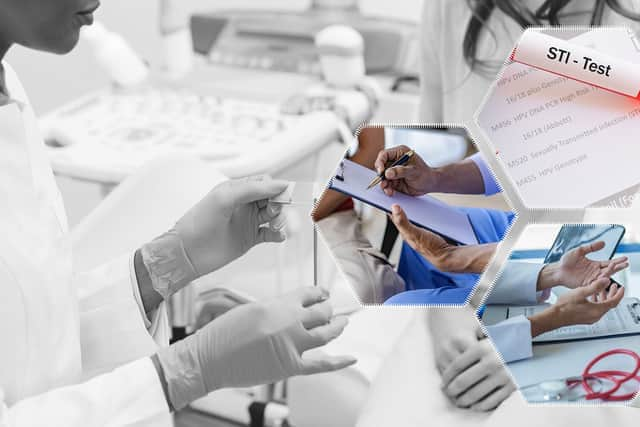Where STIs rose most in Merseyside as gonorrhoea and syphilis cases hit record high in England
and live on Freeview channel 276
Last year saw the highest number of gonorrhoea cases since records began, while syphilis appears to be making a comeback as cases reached their highest level since the 1940s.
New sexual health data released by the UK Health Security Agency (UKHSA) on Tuesday (6 June) showed record levels of gonorrhoea and syphilis diagnoses in 2022, spurring fresh safe sex warnings from the government body.
Advertisement
Hide AdAdvertisement
Hide AdThere were 82,592 gonorrhoea diagnoses last year, up more than 50% on 2021 - 16% compared to 2019, before the Covid-19 pandemic. UKHSA said this was the highest number of diagnoses in any one year since records began in 1918.
Meanwhile, infectious syphilis diagnoses increased to 8,692, up 15% compared to 2021, and 8% compared to 2019 – the largest annual number since 1948. Britons aged 15 to 24 remained the most likely to be diagnosed with sexually transmitted infections (STIs), the agency said, with more than 400 STIs diagnosed each day among young people.


In Merseyside, all five boroughs saw a huge rise in diagnosed cases of gonorrhoea, with Liverpool worst hit. The city had a ratio of 311.9 cases per 100,000 population - the 17th highest rate in England.
STIs in Merseyside by borough
- Knowsley: gonorrhoea cases rose by 93% from 2021 to 2022, with 206 infections recorded last year. A ratio of 132.9 cases per 100,000 population ranks the borough 52nd in England. There were 12 syphilis diagnoses last year, a rise of 71% on 2021 figures. Knowsley had the 151st highest rate in England.
- Liverpool: gonorrhoea cases rose by 113% from 2021 to 2022, with 1,511 infections recorded last year. A ratio of 311.9 cases per 100,000 population ranks the borough 17th in England. There were also 97 syphilis diagnoses last year, a rise of 83% on 2021 figures. Liverpool had the 35th highest rate in England.
- Sefton: gonorrhoea cases rose by 73% from 2021 to 2022, with 256 infections recorded last year. A ratio of 91.5 cases per 100,000 population ranks the borough 122nd in England. There were also 14 syphilis diagnoses last year, a rise of 56% on 2021 figures. Sefton had the 222nd highest rate in England.
- St Helens: gonorrhoea cases rose by 72% from 2021 to 2022, with 255 infections recorded last year. A ratio of 139 cases per 100,000 population ranks the borough 49th in England. There were also 11 syphilis diagnoses last year, a 0% rise on 2021 figures. St Helens had the 199th highest rate in England.
- Wirral: gonorrhoea cases rose by 135% from 2021 to 2022, with 326 infections recorded last year. A ratio of 101.7 cases per 100,000 population ranks the borough 98th in England. There were also 19 syphilis diagnoses last year, a 90% rise on 2021 figures. Wirral had the 202nd highest rate in England.
Loading....
Dr Hamish Mohammed, Consultant Epidemiologist at UKHSA, said: “STIs aren’t just an inconvenience – they can have a major impact on your health and that of any sexual partners. Condoms are the best defence, but if you didn’t use one the last time you had sex with a new or casual partner, get tested to detect any potential infections early and prevent passing them on to others. Testing is important because you may not have any symptoms of an STI.”
Advertisement
Hide AdAdvertisement
Hide AdGet tested: If you are having condomless sex with new or casual partners, regular testing for STIs and HIV is essential to maintain good sexual health. Testing is free and can be accessed through local sexual health clinics, university and college medical centres or through self-sampling kits sent discreetly through the post.
In 2022, there were 2,195,909 sexual health screens (diagnostic tests for chlamydia, gonorrhoea, syphilis or HIV) performed by sexual health services, an increase of 13.4% compared to 2021 (1,936,455).